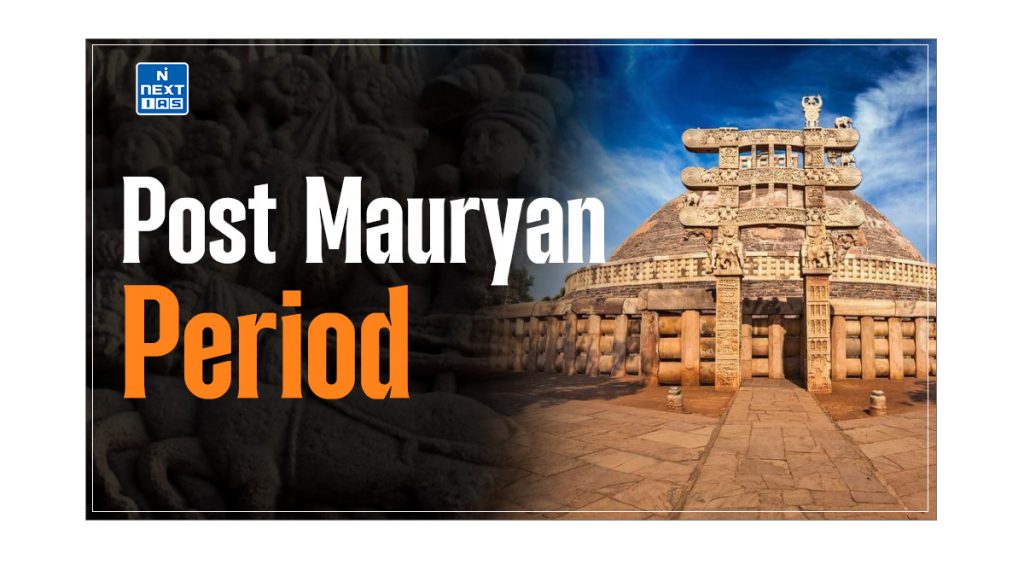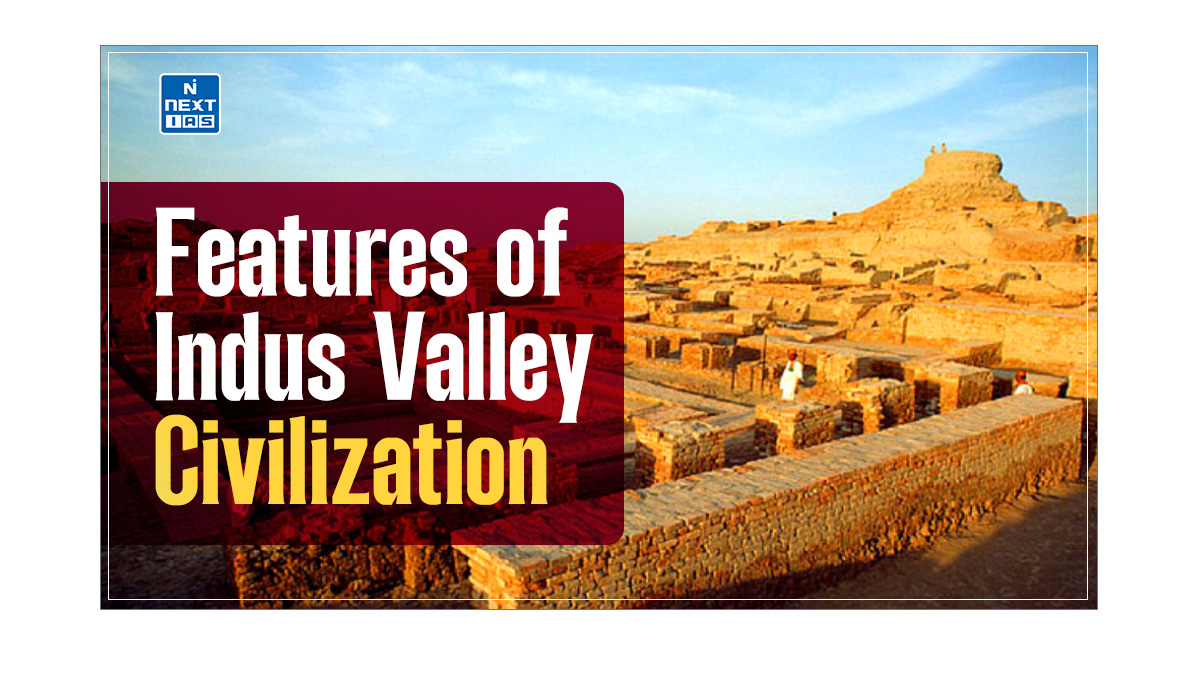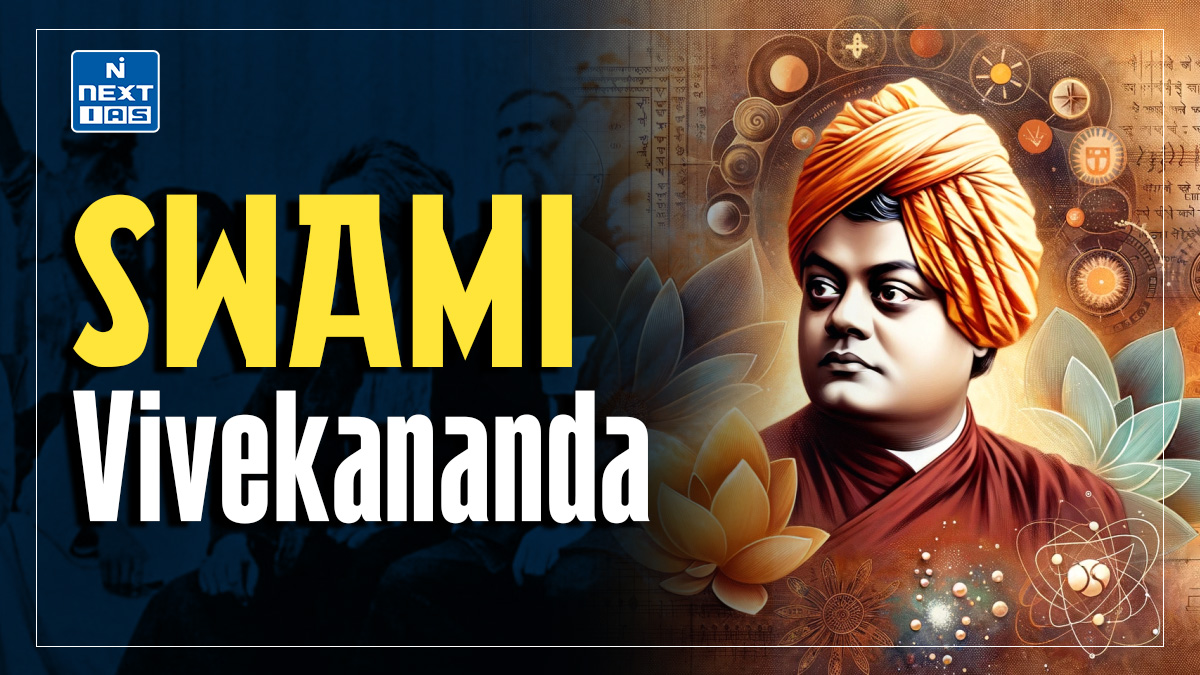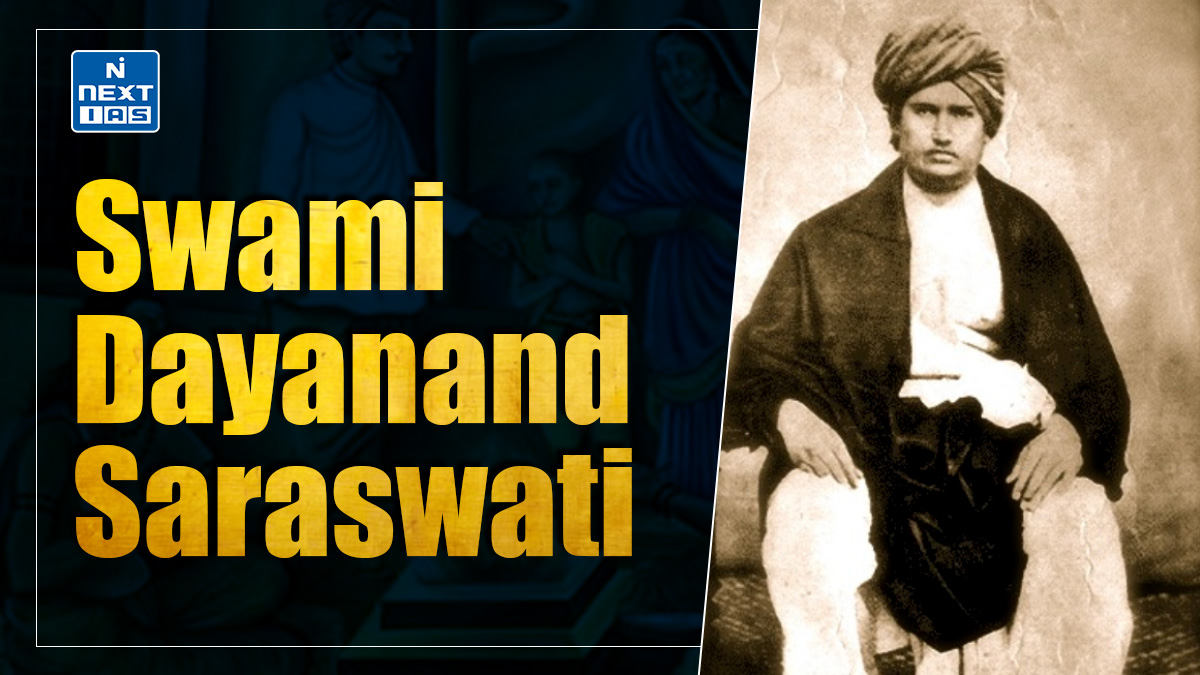
The Post Mauryan period, from approximately 200 BC to 300 AD, followed the decline of the Mauryan Empire and saw the rise of several regional dynasties across India. This era is significant for its political fragmentation and the extensive cultural exchanges with Central Asia, which influenced Indian art, religion, and trade. This article aims to study in detail the major dynasties, new developments, limitations, and the lasting impact of the post Mauryan dynasties.
About Post Mauryan Period
- The post Mauryan period refers to the period from approximately 200 BC to 300 AD, from the fall of the Mauryan dynasty to the rise of Gupta power.
- The post Mauryan period did not witness any large empire but is known for political contacts between Central Asia and India.
- In Eastern India, Central India and Deccan, the post Mauryas were succeeded by several native rulers such as the Shungas, the Kanvas and the Satavahanas.
- In North-Western India, the post Mauryas were succeeded by several ruling dynasties from Central Asia, the Kushanas becoming the most prominent.
- Foreigners found Buddhism too abstract, so the post mauryas emphasised Mahayana Buddhism or the Great Wheel to help them understand the religion.
- Some of these rulers also converted to Vaishnavism. Greek ambassador Heliodorus set up a pillar in Vishnu’s honour near Vidisa in Madhya Pradesh.
- These rulers also contributed towards theatre. The use of curtains (called Yavanika) was started during Greek rule. The Glass industry also saw considerable development.
Read our detailed article on the Mauryan Empire, Ashoka and Mauryan Administration.
Central Asian Contacts with India
- Central Asian contacts with India have been pivotal in shaping the two regions’ historical, cultural, and economic interactions.
- These exchanges began as early as the 6th century BCE, when trade routes such as the Silk Road facilitated the movement of goods, ideas, and people.
- Central Asian traders introduced new technologies and luxury items to India, while Indian products like textiles and spices reached Central Asia.
- The contact between Central Asia and India continued through various periods, including the Kushan Empire and the Mongol invasions, which further integrated the regions economically and culturally.
- The Indo-Greeks, originating from Alexander the Great’s successors, ruled northwest India from the 2nd century BCE to the 1st century CE, leaving a lasting impact on local culture and trade.
- Following them, the Sakas (Scythians) established their dominion in northwestern India around the 1st century BCE, significantly influencing regional politics and culture.
- The Kushans, who emerged from Central Asia, controlled a vast empire from the 1st to the 3rd centuries CE and played a pivotal role in spreading Buddhism and trans-Asian trade.
- The Parthians, hailing from Persia, extended their influence into northwestern India during the 1st century CE, adding to the region’s complex political landscape.
All these Central Asian dynasties have been discussed in detail in the following section.
Indo Greeks Dynasty
- Bactrian Greeks (called so because they ruled Bactria, located in modern-day Afghanistan) were the first to invade India in the early 2nd century BC. Early Indian literature calls them Yavanas.
- An essential cause of invasions was the weak Seleucid Empire in Bactria, which moved towards invading northwest India by constructing the Chinese wall and growing pressure from Scythian tribes.
- They were the first rulers in India to issue coins, which can be attributed to kings. They were also the first to issue gold coins.
- They introduced Hellenistic art features. This resulted from the Greek contact with non-Greek conquered peoples after Alexander’s death. Gandhara art was its best example in India.

Important Rulers of Indo-Greek Dynasty
- Menander (165-145 BC) invaded the Ganga-Yamuna doab and established his capital at Sakala (modern Sialkot) in Punjab.
- Also known as Milinda, Nagasena converted him to Buddhism.
- Their questions and answers related to Buddhism are recorded in Milinda Panho or Questions of Milinda.

Sakas or Scythian Dynasty
- The Sakas followed the Yavanas. They controlled a much larger portion of India than the Greeks did, and they had five branches in different parts of India and Afghanistan.
- In 58 BC, a legendary Ujjain king drove out the Sakas. He called himself Vikramaditya.
- He also started the Vikrama Samvat era with his victory over the Sakas in 57 BC.
- After that, Vikramaditya became a coveted title. As a result, over 14 Vikramadityas can be identified in Indian history.
- Chandragupta ll was the most famous Vikramaditya.
- Only the Western section held power for about four centuries of the five Sakas, thanks to its sea-borne trade.

Important Rulers of Sakas Dynasty
- Rudradaman I (130-150 AD) rule spread to Sindh, Kutch, Konkan, Malwa, and Kathiawar.
- He undertook repairs to Sudarshana Lake, located in Kathiawar.
- He was the first ruler to issue a long inscription in chaste Sanskrit.
- Junagarh’s rock inscription describes his exploits. He adopted the title ‘Mahasatrapa’.
Satrap System (60 BC – 2nd Century AD)
- The Satrap system refers to the five branches of Sakas, with their different seats of power. They are said to have been vassals of Kushans.
- The Achaemenid and Seleucid administrations directly influenced this system.
- There were practices such as hereditary dual rule, i.e., two kings ruling the same kingdom simultaneously.
Parthians Dynasty
- The Parthians originally lived in Iran. Initially, the Parthians and Sakas ruled northwest India on parallel lines.
- Indian texts call them together as Saka-Pahlavas.
Important Rulers of Parthians Dynasty
- Gondophernes, also known as Gondophares, was a notable ruler of the Indo-Parthian Kingdom in northwestern India during the 1st century CE.
- His reign is particularly significant for its association with the early spread of Christianity in India, as St. Thomas the Apostle is believed to have visited the region to propagate the faith.
Kushans Dynasty
- They are also called Yuechis or Tocharians. They were descendants of nomadic people of Central Asian steppes.
- Their empire extended from north India to a good portion of the USSR and Iran.
- This created a unique opportunity for commingling peoples and cultures, which gave rise to a new type of culture that embraced nine modern countries.
- Kushan coins found in Mathura and Varanasi show that Mathura was the Kushans’ second capital in India, the first being Purushpura or Peshawar.
- They worshipped Shiva and Buddha, and both Gods appeared on their coins.
- Ashvaghosa, who composed Saundrananda, was patronised by Kushans.
Important Rulers of Kushans Dynasty
- There were two successive dynasties of Kushans:
- The first was Kadphises. They issued copper and gold coins, mostly minted as imitations of Roman coins.
- Second was Kanishka, named after its primary ruler. Kanishka erected a monastery and a huge stupa in Purushpura.
- He also started an era in 78 AD, known as the Saka era, which the Government of India used.
- Also, the Fourth Council of Buddhism, held in Kashmir, was held under the patronage of Kanishka.
- It was in this council that the doctrines of Mahayana Buddhism were finalised.
Polity of Central Asian Dynasties
- The Central Asian conquerors developed a feudatory organisation as they imposed rules on numerous petty native Kings.
- They adopted the pompous title of ‘king of kings’, which indicates their supremacy over the smaller ones.
- The Saka-Kushans started the idea of the divine origin of Kingship. They were called sons of God.
- They introduced the satrap system of government, in which the empire was divided into various satrapies, each under the rule of a satrap.
- Some practices they adopted, different from the native ones, were hereditary dual rules, whether it was two siblings or father and son.
- The Greeks introduced the practice of military governorship. They appointed their governors called Strategos.
Religion of Central Asian Dynasties
- Some foreign rulers converted to Vaishnavism, while others converted to Buddhism.
- We have read about Heliodoros, who set up a pillar in Vidisa, and Menander, who became a Buddhist.
- The Kushana rulers worshipped Shiva and Buddha and a few Vishnu.
Disintegration of Central Asian Dynasties
- The Central Asian rulers, the Greeks, the Sakas, the Kushanas, and the Parthians, ultimately lost their identity in India.
- They became completely Indianised and were eventually absorbed into Indian society as warriors or Kshatriyas.
- They came to be considered second-class Kshatriyas.
- In no other period of Ancient Indian history were foreigners assimilated into Indian society on such a large scale as in the post Mauryan period.
Impact of Central Asian Dynasties
- The Saka-Kushans settled in India for good and completely identified themselves with its culture. They adopted the Indian script language since they did not have one.
- The Saka-Kushan phase in India encountered a distinct advance in building activities. They used burnt bricks and tiles for construction. They built brick walls, and their typical pottery is red ware.
- One of the Saka-Kushans’ most significant contributions to India was the introduction of better Cavalry and the widespread use of horses.
- They introduced turbans, tunics, trousers, and long, heavy coats. They also brought in caps, helmets and boots that warriors used.
- The arrival of Central Asian people established intimate contacts between Central Asia and India.
- The Kushanas controlled the silk route, which started from China and passed through their empire in Central Asia and Afghanistan to Iran and Western Asia.
- This route was a source of great income. They also promoted agriculture.
Importance of Post Mauryan Dynasties
The importance of post Mauryan dynasties is evident in several significant developments during this period.
- Social and cultural exchange flourished alongside India’s commercial contacts with the world, leading to an era of rich interaction and integration.
- In the northwest, the subcontinent became a cultural melting pot, with the arrival and influence of Greek, Persian, and Mongol populations and traditions shaped the region’s art, architecture, and social norms.
- Buddhism’s spread to China during this time was particularly noteworthy, as doctrines, scriptures, and relics were transmitted, facilitating the religion’s further eastward expansion to Japan and Korea.
- This period was marked by significant transformations in Buddhist practices and interpretations as they adapted to new cultural contexts.
Post Mauryan Trends in Indian Art and Architecture
- The post Mauryan period (c. 200 BCE—300 CE) witnessed significant developments in Indian art and architecture, marked by regional styles and foreign influences.
- This era saw the rise of the Gandhara and Mathura schools of art. Gandhara art, influenced by Hellenistic and Greco-Roman styles, is known for its realistic sculptures of the Buddha, while Mathura art emphasised indigenous forms with robust, idealised figures.
- Stupa architecture flourished, with famous examples like the Sanchi Stupa being further embellished during this period.
- Rock-cut architecture, such as the Ajanta and Karla caves, also gained prominence. These caves contain intricate carvings and frescoes depicting scenes from Buddha’s life.
- These trends reflect the growing influence of Buddhism and foreign interactions in shaping Indian art and architecture.
Limitations of Post Mauryan Dynasties
The limitations of the Post Mauryan dynasties are as follows:
- Political Fragmentation: The decline of the Mauryan Empire led to the emergence of multiple regional kingdoms, resulting in a fragmented political landscape that lacked centralised control.
- Increased Foreign Invasions: The period saw a series of invasions by foreign powers like the Indo-Greeks, Shakas, and Kushanas, leading to political instability and cultural upheavals in various regions.
- Economic Disparities: Although trade flourished, the economic benefits were unevenly distributed, with some regions and cities thriving while others lagged, contributing to social and economic disparities.
- Decline in Centralized Administration: The Mauryas’ sophisticated and centralised administrative system was lost, leading to varying governance quality and efficiency across regions.
- Limited Cultural Unity: Despite cultural exchanges, the diverse religious, linguistic, and regional differences during this period sometimes hindered the development of a unified cultural identity across the subcontinent.
Conclusion
The post Mauryan period was a significant transition in Indian history, characterised by the fragmentation of political power, the rise of regional dynasties, and the deepening of cultural exchanges with Central Asia. Despite the political instability and foreign invasions, this era witnessed the flourishing of trade, the spread of Buddhism, and the integration of new cultural elements into the Indian subcontinent. While the absence of a centralised authority posed challenges, it led to a rich tapestry of cultural diversity and the emergence of unique regional identities. The legacies of the post Mauryan dynasties, especially their contributions to art, religion, and trade, continue to shape India’s cultural and historical landscape.
Frequently Asked Questions (FAQs)
What is the post Mauryan period?
The post Mauryan period (c. 200 BCE—300 CE) refers to the era following the decline of the Maurya Empire, which was characterised by the rise of regional kingdoms such as the Shungas, Satavahanas, Kushanas, and Indo-Greeks.
What is dark age of the post Mauryan period?
The “Dark Age” of the post Mauryan period refers to a time of political instability and fragmentation following the decline of the Maurya Empire.
What is post Mauryan period stupas?
Post Mauryan stupas are large dome-shaped Buddhist monuments built following the decline of the Maurya Empire.






